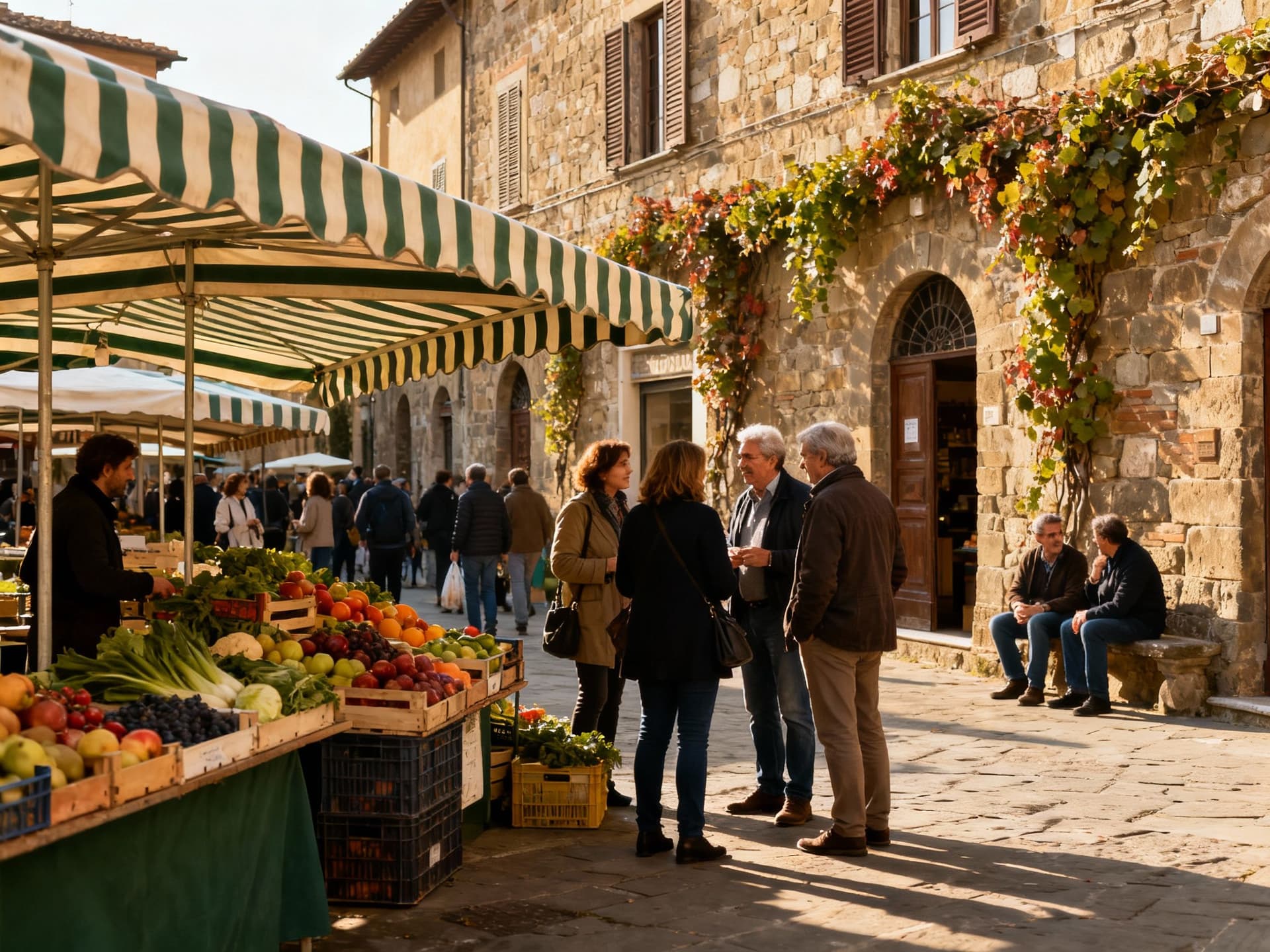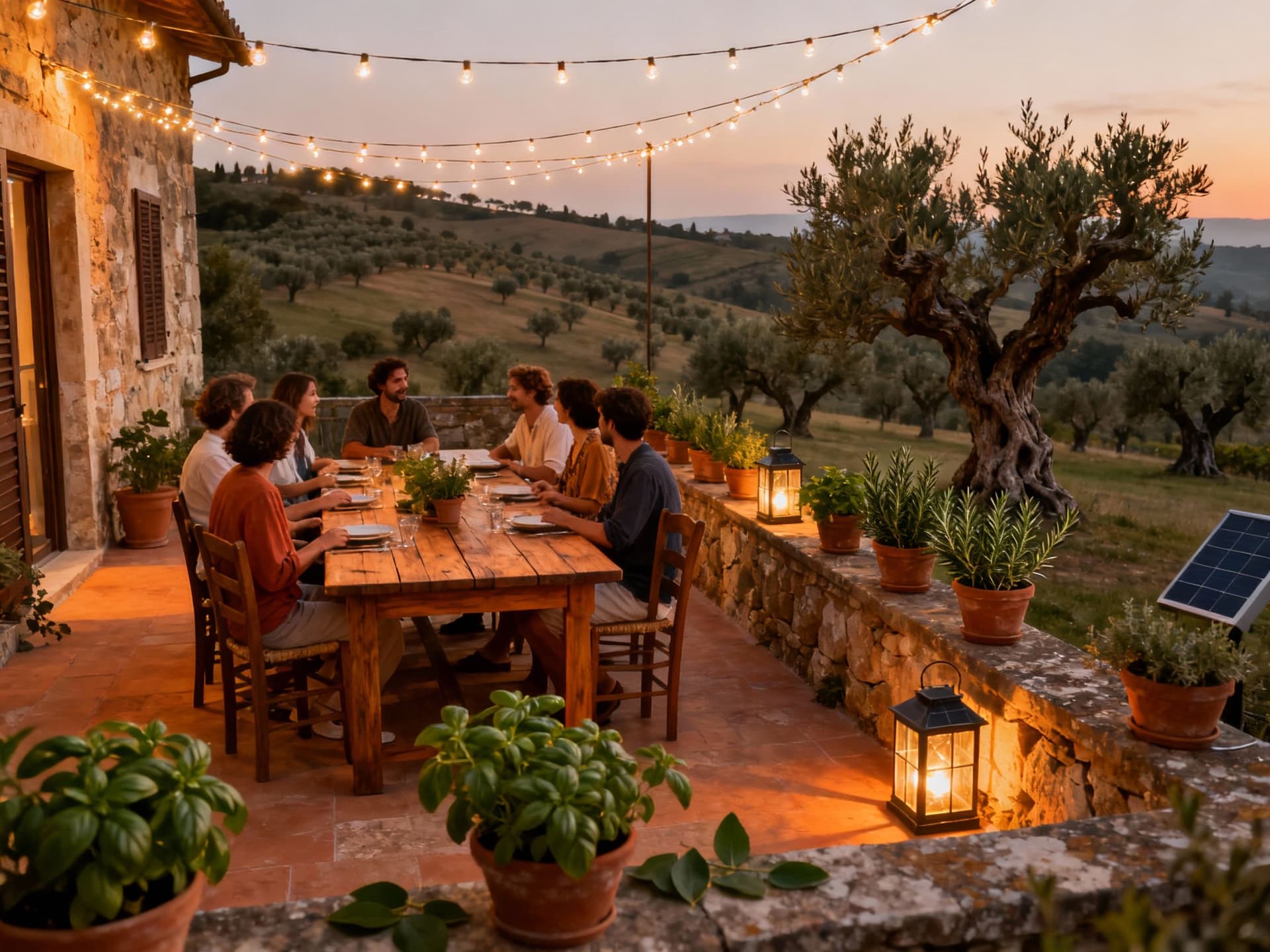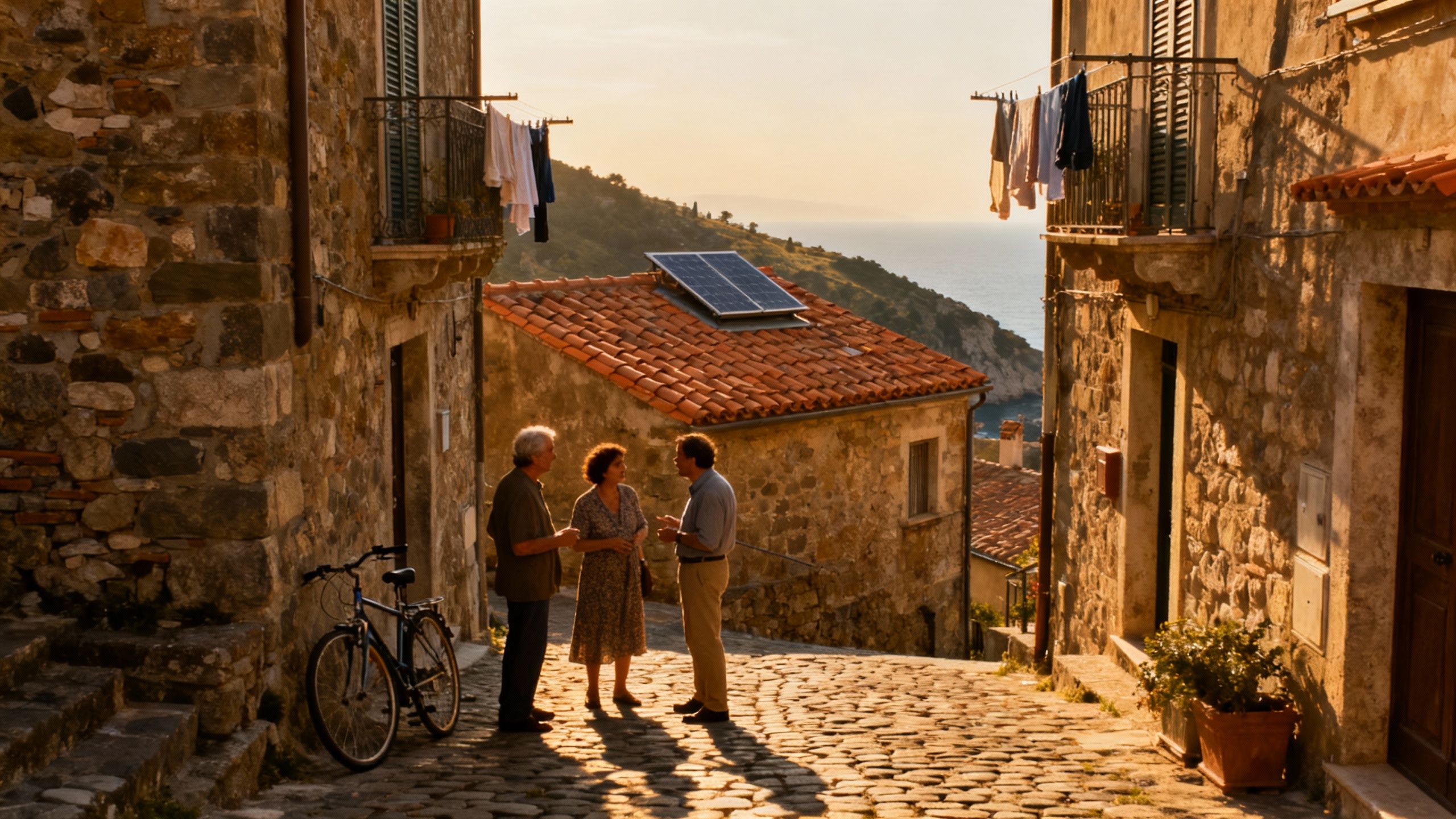When Solar and Stone Meet: Italy’s Green Infrastructure Advantage
Italy’s historic homes and rising renewables combine to lower running costs and deepen lifestyle value — use audits, discreet solar and local experts to make it real.
Imagine waking to church bells in a stone village outside Lucca, then cycling past terraced olive groves to a café where the espresso machine hums on power partly from the rooftop panels down the lane. Italy is a place where centuries-old textures meet new green systems — solar on tiled roofs, small hydro runs in mountain streams, and community gardens fed by greywater. For international buyers who care about sunlight, seasons and a home that breathes with the landscape, Italy’s rising renewables and improving green infrastructure aren’t an abstract promise — they are tangible savings, quieter living and a different rhythm of day-to-day life. Recent data shows renewables are now a live, growing part of Italy’s energy mix, shifting how homeowners think about running and retrofitting a property. (See record 41% renewables in 2024 (Terna/Enerdata)).
Living the Italy lifestyle — sun, stone and smarter energy

Days in Italy are paced by small rituals: a market visit on Saturday mornings, an aperitivo as the light softens, communal lunches under grape pergolas. From Milan’s tram-lined streets to seaside lanes in Liguria and quiet Umbrian hilltops, the magic is in texture and time. This lifestyle is part of why foreign demand for Italian homes has surged in recent years — buyers want not only architecture but the lived-in, sustainable routines that come with it. Prime and second-home markets remain active, with city cores and countryside both showing interest from overseas buyers. (See Savills: Destination Italy for market context).
Neighborhood spotlight: Milan’s green corners and Porto Antico’s seaside community
Milan keeps surprising: beyond its boutiques you’ll find Bosco Verticale’s vertical vegetation and quieter neighborhoods like Isola where solar retrofits and small courtyards change how families live. On the coast, Genoa’s Porto Antico and nearby fishing villages mix boat life with community gardens and emerging microgrids. These pockets show a recurring theme — historic fabric can be gently upgraded with renewable tech while preserving stone, shutters and shady courtyards.
Food, markets and seasons: how climate and community shape property choice
Choosing between Liguria’s seaside breeze and Tuscany’s inland light matters for more than views. Solar gain, rainwater harvesting opportunities, and natural cooling (thick stone walls, shutters) influence renovation choices and monthly running costs. Markets such as Mercato Centrale in Florence or the Pescheria in Palermo are social arteries — living nearby means morning produce runs, friendships and a lifestyle that values local sourcing and low‑impact living.
Why Italy’s green infrastructure matters to buyers

Italians have long used vernacular methods — thick walls, shutters, spring-fed wells — to temper climate. Today, renewables are joining that tradition: solar PV on roofs, small hydro in mountain valleys, and community-scale biomass and geothermal where appropriate. The European Environment Agency and national indicators show renewable share rising, though Italy still faces a large 2030 gap. Practically, this expansion means more reliable local generation, growing interest in energy-efficient retrofits, and better prospects for owners who invest in solar, insulation and smart meters. These upgrades aren’t just ethical — they reduce bills and make properties more attractive to renters and longer-term buyers. (See EEA and ISPrA data).
Practical property types: what to expect and what to add
Stone casali in Umbria and Puglia will need different interventions than a Milanese apartment. Casali often benefit most from solar hot water, photovoltaic arrays discreetly sited on outbuildings, and improved insulation in roofs and floors. Apartments in historic centers require dialogue with local soprintendenze (heritage offices) but can still gain efficiency through windows restoration, roof‑terrace PV or shared condo systems. Understanding the property type helps you balance preservation with greener living.
Steps to match lifestyle with green upgrades
- 1. Survey and plan: commission an energy audit that maps sun, wind and water on the site. 2. Prioritise quick wins: insulation, efficient boilers or heat pumps, and LED lighting reduce bills fast. 3. Add renewable generation thoughtfully: rooftop PV, battery storage and heat pumps tuned to the microclimate. 4. Work with heritage authorities early where applicable to avoid costly delays. 5. Consider community options: shared PV arrays or neighbourhood energy cooperatives reduce upfront cost and build local ties.
Insider knowledge: things expats wish they’d known
Buyers often arrive swept up by romance and then hit small, practical surprises: heritage rules that limit external changes, seasonal moisture in basements, and higher-than-expected winter energy needs for badly insulated homes. Many expats told us they wished they’d budgeted for an energy audit and a season’s worth of running costs before committing. Savills and Knight Frank data also remind us that international demand is concentrated in specific pockets — Milan, Tuscany, Lake Como and Sardinia — so prices and renovation timelines can vary sharply.
Cultural realities: neighbours, language and local stewardship
- • Speak with your new neighbours: Italians value reciprocity; a thoughtful gesture (home-baked cake, help with a small repair) goes a long way. • Learn the permit rhythm: small towns can process works seasonally; plan winter retrofits when contractors are freer. • Join local cooperatives: energy communities are growing, and they are practical ways to share costs and build ties.
If you can imagine mornings at a sunlit kitchen table peeling mandarins from a wavering tree, and evenings on a terrace lit by low-consumption lamps, Italy offers a life that marries slow, sensory living with an accelerating green reality. Practically, start with an energy audit, choose properties with space for discreet PV or thermal upgrades, and work with local agents experienced in both heritage and green retrofits. Agencies who speak the language of place — conservation rules, local contractors, and community energy projects — become the difference between a lovely purchase and a lovingly managed home. When you’re ready, ask for properties with documented energy improvement plans and local references; those homes age better in value and in happiness.
Norwegian market analyst who relocated from Oslo to Provence; guides investors with rigorous portfolio strategy and regional ecological value.


